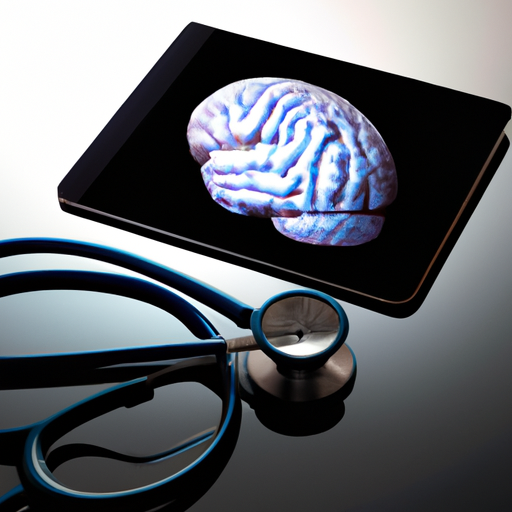Table of Contents
Modern healthcare has seen significant advancements in medicine, with the shift from traditional equipment to intelligent AI systems revolutionizing diagnostics, surgical procedures, patient care, and overall medical practices.
# 1. The Evolution of Medical Equipment
Medical equipment has evolved significantly since the early days of stethoscopes and thermometers. Electronics, miniaturization, and the introduction of X-rays, ultrasound, and MRI machines in the mid-20th century improved diagnostic accuracy. Computers further facilitated data analysis. However, these devices still relied on human operation, leading to variability and potential human error. As technology continues to evolve, more integrated, intelligent systems are needed.
# 2. The Rise of Digital Health and Data Analytics
The evolution of medical equipment led to the rise of digital health initiatives, such as Electronic Health Records (EHRs), which facilitated patient data sharing and coordinated care. However, the volume of data presented challenges in storage, retrieval, and analysis. Big Data technologies and AI algorithms revolutionized healthcare by identifying patterns and trends, enabling predictive treatments and contextually aware insights.
# 3. Artificial Intelligence in Diagnostic Medicine
AI has revolutionized diagnostic medicine by leveraging machine learning and neural networks to analyze large datasets and identify abnormalities with precision. AI can now detect early signs of diseases like cancer or diabetic retinopathy by analyzing image patterns and comparing them with vast medical databases. Its ability to continually learn and improve accuracy over time ensures its diagnostic capabilities remain state-of-the-art. AI is also used in genetic screening to identify mutations linked to hereditary diseases, offering personalized treatment plans. This integration of AI has improved early detection rates and reduced the strain on healthcare professionals, allowing them to focus on more complex cases.
# 4. Surgical Precision: From Human Hands to Robotic Assistance
Surgical procedures have also been transformed by the advent of intelligent systems. Traditional surgeries often involved significant risks, lengthy recovery times, and high human error margins. The introduction of robotics into surgery marked a profound shift. Robotic-assisted surgery offered unparalleled precision, reducing risks and accelerating recovery times. Systems like the Da Vinci Surgical System enabled surgeons to perform complex procedures through tiny incisions, translating their hand movements into smaller, precise motions of tiny instruments inside the patient’s body.
AI has further enhanced these robotics systems, providing them with capabilities such as real-time decision-making and predictive analytics. Intelligent systems can now guide surgeons by suggesting optimal cutting paths, avoiding critical structures, and even alerting them to potential complications in real time. This has not only improved surgical outcomes but also democratized access to high-quality surgical care. Surgeons in remote or under-resourced areas can now perform complex surgeries with the aid of robotic systems, sometimes even through remote operation.
The benefits extend beyond individual surgeries. AI-powered surgical systems collect immense amounts of data, contributing to a global pool of medical knowledge. This data can be analyzed to improve future surgeries, creating a continuous loop of learning and improvement. In essence, the marriage of AI and robotics in surgery has not only elevated the standards of care but has also paved the way for a future where surgeries are safer, quicker, and more efficient.
# 5. The Future: Personalized Medicine and Beyond
As we look toward the future, the role of AI in healthcare is poised to grow exponentially. One of the most promising areas is personalized medicine, where treatments are tailored to the individual patient based on their genetic makeup, lifestyle, and other factors. AI algorithms can analyze vast amounts of data—ranging from genetic information to real-time health metrics collected through wearable devices—to design personalized treatment plans that optimize efficacy and minimize side effects. This shift from a one-size-fits-all approach to personalized medicine promises to make healthcare more effective and patient-centric.
Moreover, AI’s potential extends beyond current applications. Future intelligent systems could revolutionize drug discovery by analyzing complex biochemical interactions and predicting how new compounds will behave. They could also transform public health by analyzing social, environmental, and economic data to predict and mitigate disease outbreaks. Wearable and implantable AI-powered devices could continuously monitor patient health, alerting them and their healthcare providers to potential issues before they become critical.
The ethical considerations surrounding AI in medicine also need to be addressed. Issues of data privacy, bias in AI algorithms, and the role of human oversight are critical topics of discussion as we integrate these technologies deeper into healthcare systems. Policymakers, healthcare providers, and technologists must work together to establish frameworks that ensure AI is used responsibly and equitably.
In conclusion, the journey from traditional medical equipment to intelligent AI systems is still unfolding, promising to make healthcare more precise, efficient, and personalized. While challenges remain, the potential benefits are too significant to ignore. The ongoing collaboration between medical professionals, technologists, and policymakers will be key to unlocking the full potential of this exciting transformation.
